Unit on Ableism - Campus Activism
Unit on Ableism - Campus Activism
Unit on Ableism - Campus Activism
- No tags were found...
Create successful ePaper yourself
Turn your PDF publications into a flip-book with our unique Google optimized e-Paper software.
Sessi<strong>on</strong> 3 <strong>Ableism</strong>Aims• To define ableism• To examine three aspects of the oppressi<strong>on</strong> of ableismSkillsStudents will:• Identify target and n<strong>on</strong>target groups of mental, physical and emoti<strong>on</strong>al ableism• Produce examples of stereotypes, violence, and instituti<strong>on</strong>al mistreatment that differentgroups of people with disabilities experience.Preparati<strong>on</strong>You will need a copy of the power chart from the foundati<strong>on</strong> sessi<strong>on</strong>s for reference, as well asthe 3-hearts exercise from sessi<strong>on</strong> 1 and the disability word map from sessi<strong>on</strong> 2.Sessi<strong>on</strong> Descripti<strong>on</strong>Students address ableism as an oppressi<strong>on</strong>, examining stereotypes, violence and instituti<strong>on</strong>alizedmistreatment people with disabilities experience, as well as the effects of these forms ofoppressi<strong>on</strong> <strong>on</strong> them.Sessi<strong>on</strong> Outline1. To Begin 10 minutes2. <strong>Ableism</strong> 15 minutes3. 3 faces of ableism 20 minutes4. Closure 10 minutesAgenda1. To Begin 10 minutesWrite the phrases “physically different,” “mentally different,” and “emoti<strong>on</strong>ally different” <strong>on</strong> theboard. For each phrase, ask students to call out words used to describe the kinds ofphysical/emoti<strong>on</strong>al/mental differences⎯differences in body size and shape, mental intelligence,emoti<strong>on</strong>al intelligence, sense-percepti<strong>on</strong>s, speech, behavior and so forth⎯that people can have.Reminding students of the 3-heart-box exercise from sessi<strong>on</strong> 1, encourage students to avoidstereotypical names, using neutral words as much as possible⎯words that d<strong>on</strong>’t reflect negativejudgments or putdowns about the difference in questi<strong>on</strong>.Write the word “disabled” <strong>on</strong> the board. Ask students what happens to our image of“differences” when particular differences are renamed “disabilities.”Ask what is implied when some<strong>on</strong>e is described as dis-abled. Ask students for words that havebeen used in our society to mean “disabled,” and write these <strong>on</strong> the board. Be sure to include“handicapped” and “impaired.” What message is implied in these terms?Finally, write the phrases “disabled people” and “people with disabilities” <strong>on</strong> the board. Askstudents to notice any differences in emphasis in these two phrases. Close by explaining that<str<strong>on</strong>g>Unit</str<strong>on</strong>g> <strong>on</strong> <strong>Ableism</strong>10


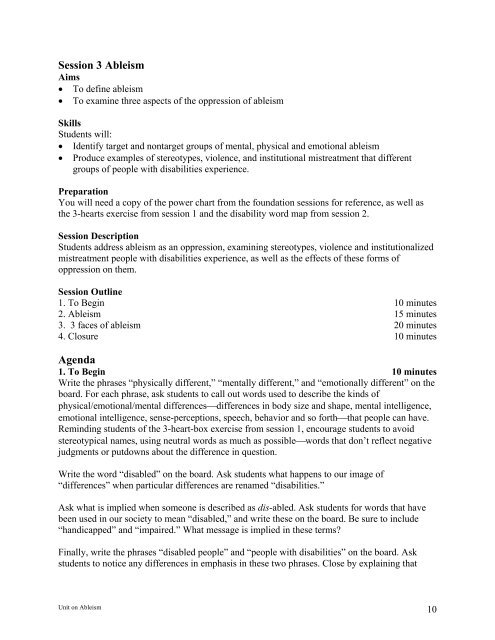
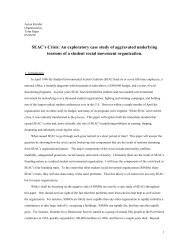

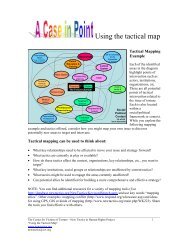
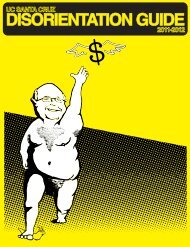

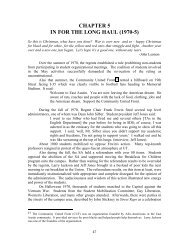
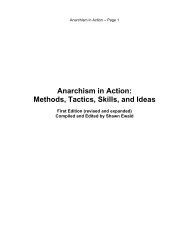

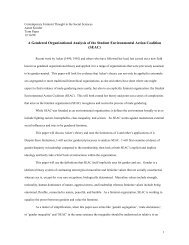


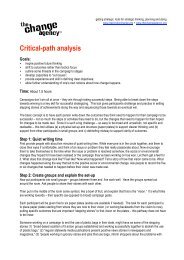

![Meaningful Student Involvement Research Guide [pdf] - SoundOut](https://img.yumpu.com/38822556/1/190x231/meaningful-student-involvement-research-guide-pdf-soundout.jpg?quality=85)